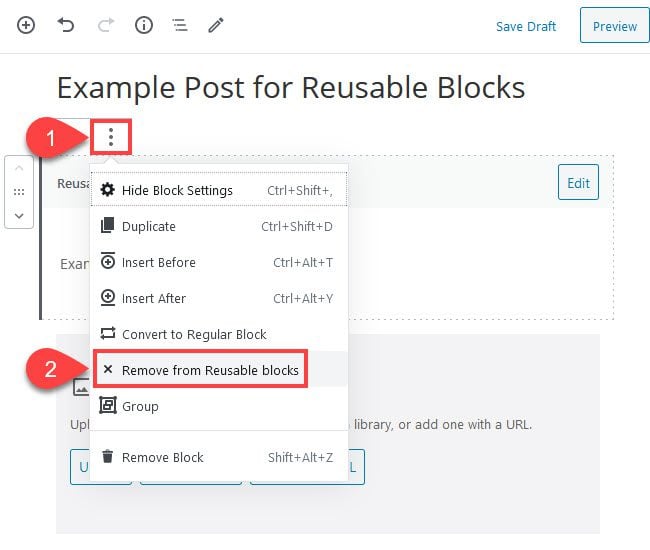
Let’s take a look at all the tools on the top bar in detail.ġ) The WordPress symbol allows us to return to the backend of our site. The central area of the editor, on the other hand, is where we go to create content. The Gutenberg sidebar is activated or deactivated by clicking on Settings (gear icon). The first section is the top bar that allows us to see all the available blocks, switch between edit and select modes and quickly access the publishing options. The block editor interface has elements arranged in three main sections. You’ll then be able to create the entire contents or part of the article as if you were using the classic editor. To do this you just need to add a classic editor block as you see here. Using the classic editor within GutenbergĪs you may have already guessed you can also use the classic editor within Gutenberg. To do this you just need to click on Convert to blocks as shown in this screenshot. The second one is to convert the content into separate blocks. The first is to leave the content in the classic block which works exactly like the classic WordPress editor. In this case, when you go to edit content that you had created with the block editor, Gutenberg inserts all the content in one classic block as you see in this example below:Īt this point you have two choices. If you decide to switch to Gutenberg, but had created content with the block editor what would happen next? To the right in the editor we have the publishing options that allow us to preview the article, save the draft, publish or schedule the post.Ĭonvert content from the classic editor to the block editor The default display mode is Visual, but we can switch to the HTML editor by clicking on Text.

#Wordpress reusable image and text blocks install
To disable Gutenberg, we install and activate the Classic Editor plugin. Remember that officially support for this plugin would end on December 31, 2021.

To restore the classic WordPress editor you can use a simple plugin: Classic Editor.
#Wordpress reusable image and text blocks how to
Whatever the reason that leads you to want to disable it, let’s see how to return to the classic WordPress editor.

In other words, there are those who find the block editor more complex to use and prefer, to continue using the classic version. Besides, there are cases when the themes or plugins in use are not compatible with the new editor and you may want to continue using the classic one. Disable GutenbergĪfter three years since its release, there are those who prefer to continue using the classic editor. This means that each element of our page or article is represented by a block: paragraphs, headings, images, each of them consists of a separate block. Unlike the classic editor, Gutenberg works in blocks. With the release of WordPress version 5.0 on December 6, 2018, Gutenberg became the default WordPress editor and replaced the classic TinyMCE editor. Create content with Gutenberg or import it from other editors?.Using the classic editor within Gutenberg.



 0 kommentar(er)
0 kommentar(er)
